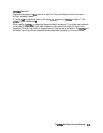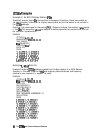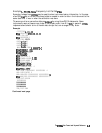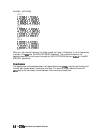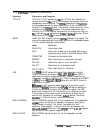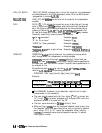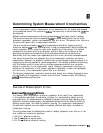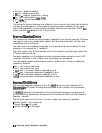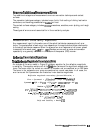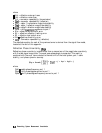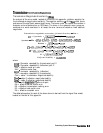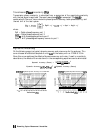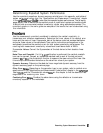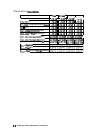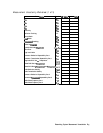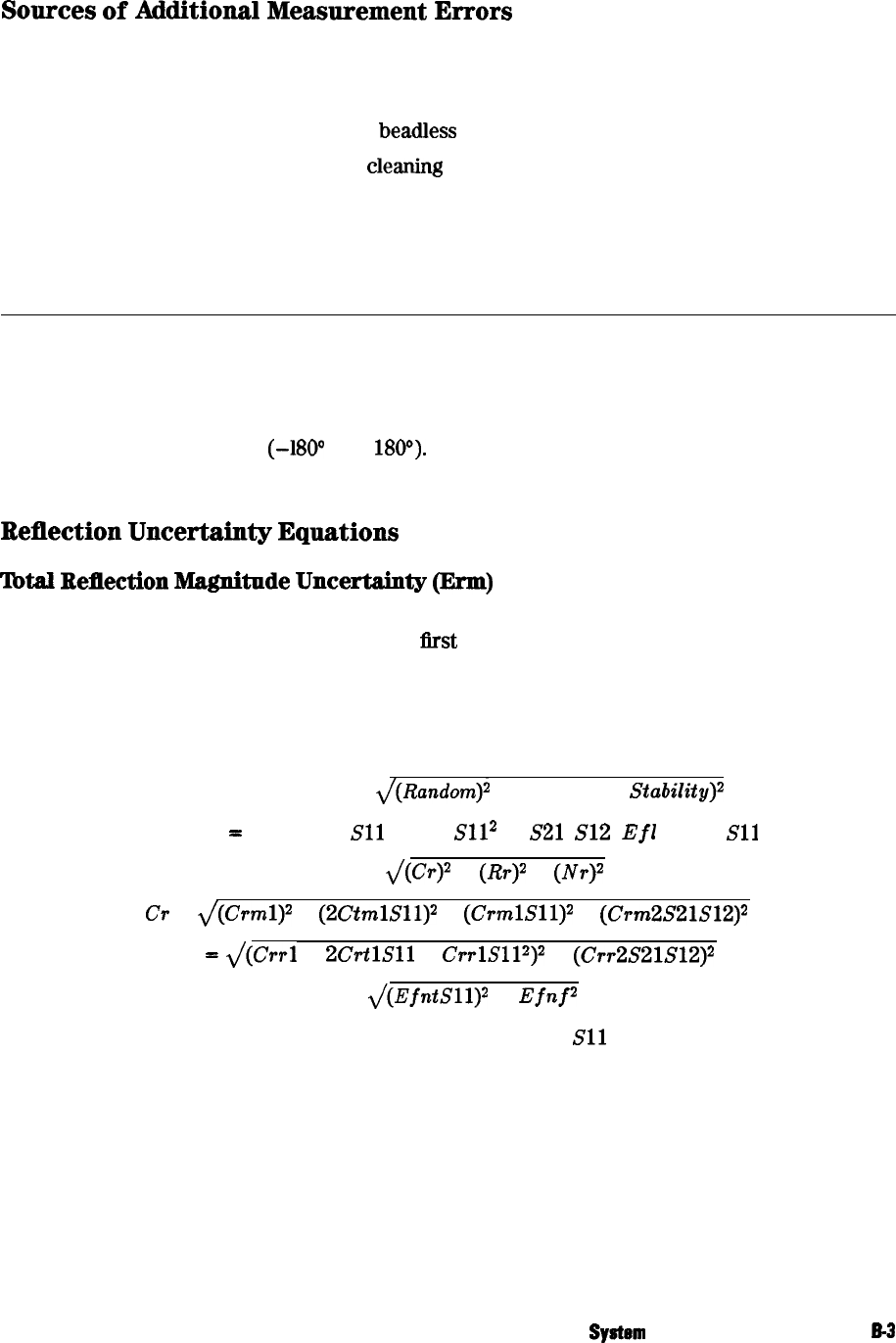
Sources of
Additional
Measurement
Errors
Two additional categories of measurement errors are connection techniques and contact
surfaces.
The connection techniques category includes torque limits, flush setting of sliding load center
conductors, and handling procedures for
beadless
airlines.
The contact surfaces category includes
cleaning
procedures, scratches, worn plating, and rough
seating.
These types of errors are not accounted for in the uncertainty analysis.
Measurement Uncertainty Equations
Any measurement result is the vector sum of the actual test device response plus all error
terms, The precise effect of each error term depends on its magnitude and phase relationship
to the actual test device response. When the phase of an error response is not known, phase
is assumed to be worst case
(-HO0
to +
BOO).
Random errors such as noise and connector
repeatability are generally combined in a root-sum-of-the-squares (RSS) manner.
Reflection
Uncertainty
Equations
Total
Reflection
Magnitude
Uncertainty
(Erm)
An analysis of the error model in Figure El yields an equation for the reflection magnitude
uncertainty. The equation contains all of the
llrst
order terms and the significant second order
terms The terms under the radical are random in character and are combined on an RSS basis.
The terms in the systematic error group are combined on a worst case basis. In all cases, the
error terms and the S-parameters are treated as linear absolute magnitudes.
Reflection magnitude uncertainty (forward direction) =
Erm = Systematic +
d(Random)2
+ (Drift and
Stability)2
Systematic = Efd + Efr
Sll
+ Efs
S112
+
S21
S12
EfZ
+ Abl
Sll
Random =
am
+
(RT-)~
+
(NT)~
Cr =
J(Crml)2
+
(2CtmlS11)2
+
(CrmlS11)2
+
(Crm2S21S12)2
Rr =
d(Crrl
+
2CrtlSll
+
CrrlS112)2
+
(Crr2S21S12)2
Nr =
d(EfntSll)z
+
Efnf2
Drift and Stability = Dmlbl
Sll
Determining
System
Measurement Unwrtainties
B-3



